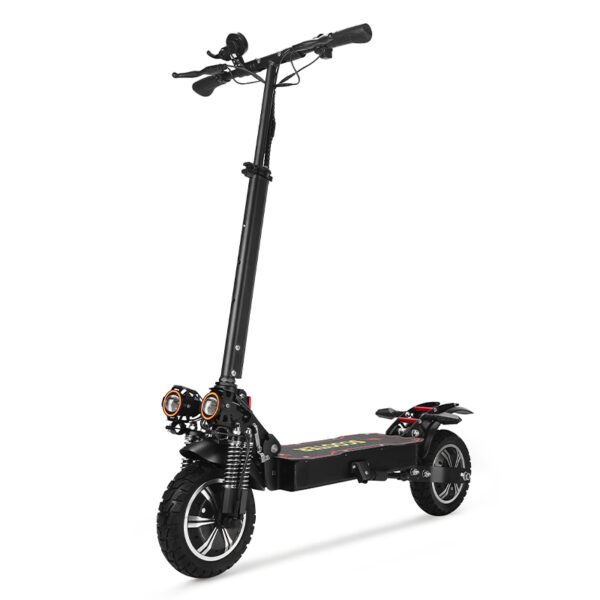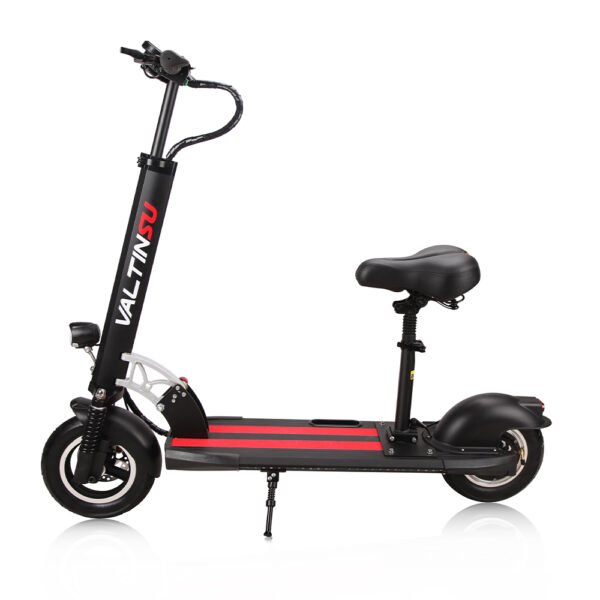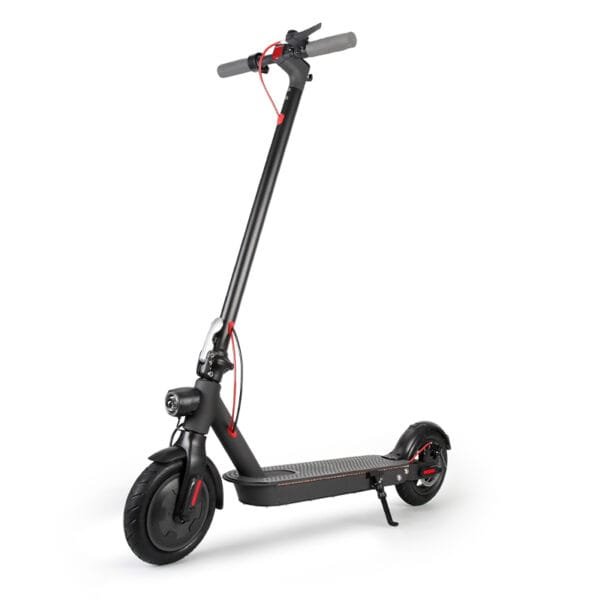
Popular Trends in Electric Scooters: The Future of Urban Mobility
Introduction
Electric scooters are rapidly changing the way people move around cities.
As urban areas become more congested, commuters are searching for efficient, affordable, and eco-friendly transportation options.
Enter the electric scooter—a compact, battery-powered vehicle that offers a seamless alternative to cars and public transport.
In recent years, electric scooters have gained immense popularity across North America, Europe, and Asia.
Their rise is fueled by increasing fuel costs, growing environmental concerns, and advancements in battery technology.
With many governments actively supporting electric mobility, the future of e-scooters looks brighter than ever.
This article explores the latest trends in electric scooters, covering technological advancements, government policies, popular models, and future predictions.
Why Are Electric Scooters Gaining Popularity?
Several factors have contributed to the growing demand for electric scooters:
1. Rising Fuel Prices and Environmental Concerns
With the cost of gasoline skyrocketing, commuters are looking for cost-effective alternatives.
Electric scooters run on rechargeable batteries, making them a budget-friendly option for daily commuting.
Additionally, e-scooters produce zero emissions, helping to reduce urban pollution.
2. Cost-Effective and Convenient
Compared to cars, electric scooters are significantly cheaper to purchase and maintain.
They require minimal servicing, and charging costs are much lower than fueling a gas-powered vehicle.
Their compact design allows riders to navigate through traffic easily, saving both time and frustration.
3. Ideal for Urban Commuting
E-scooters are perfect for short-distance travel, especially in crowded cities.
Many people use them for the “last mile” of their journey, connecting seamlessly with public transportation.
Their lightweight structure and easy portability make them an excellent choice for city dwellers.
Government Policies Supporting Electric Scooters
Governments worldwide are encouraging the adoption of electric scooters through policies, incentives, and infrastructure development.
North America: Regulations and Incentives
In the U.S. and Canada, several cities have introduced regulations to support e-scooter usage.
Some states offer tax credits for purchasing electric scooters, while others have integrated e-scooter rental services into their public transport systems.
Europe: Eco-Friendly Initiatives and Subsidies
European nations have been at the forefront of green mobility.
Countries like Germany, France, and the Netherlands provide subsidies for e-scooter buyers.
Cities such as Paris and London have also implemented strict emission controls, making e-scooters a preferred mode of transport.
Asia: Growth of Shared E-Scooter Services
In Asia, electric scooter-sharing services are booming, especially in densely populated cities like Beijing, Tokyo, and Singapore.
Governments are investing in charging stations and dedicated scooter lanes to promote sustainable commuting.
Technological Advancements in Electric Scooters
The electric scooter industry has seen incredible advancements in recent years, making them more efficient, safe, and user-friendly.
1. Improved Battery Life and Fast Charging
Modern e-scooters come with lithium-ion batteries that offer longer travel ranges and faster charging times.
Some high-end models can cover over 60 miles on a single charge.
2. Smart Connectivity Features
Many electric scooters now integrate with mobile apps, offering GPS tracking, anti-theft alarms, and ride analytics.
IoT-enabled scooters provide real-time data, enhancing user experience and safety.
3. Lightweight and Durable Materials
Manufacturers are using carbon fiber and aerospace-grade aluminum to design lightweight yet sturdy e-scooters.
These materials improve durability while keeping the scooter easy to carry.
The Role of Electric Scooters in Sustainable Transportation
Electric scooters play a crucial role in reducing carbon footprints and improving urban mobility.
1. Reducing Carbon Emissions
E-scooters eliminate the need for fossil fuels, significantly cutting down air pollution.
Cities with high e-scooter adoption have reported lower levels of CO2 emissions.
2. Solving Last-Mile Connectivity Issues
Public transport often fails to cover the “last mile” from stations to workplaces or homes.
Electric scooters provide a convenient solution, making commuting more efficient.
3. Integration with Public Transportation
Several cities are working on integrating electric scooters with metro and bus networks.
This seamless connectivity makes urban travel more accessible and environmentally friendly.
Best Features to Look for in an Electric Scooter
When purchasing an electric scooter, several features can impact your overall riding experience.
Here are the top factors to consider:
1. Battery Range and Charging Time
A longer battery range means you can travel farther without worrying about recharging.
High-end models can cover up to 60 miles per charge.
Additionally, fast-charging technology reduces downtime, making daily commuting hassle-free.
2. Speed and Safety Features
Most electric scooters offer speeds between 15 to 30 mph, which is ideal for urban commuting.
Safety features such as anti-lock braking systems (ABS), shock absorption, and LED headlights improve ride stability and visibility.
3. Portability and Weight Capacity
Lightweight models (under 30 lbs) are easier to carry and store.
If you’re a daily commuter, look for foldable designs that can be easily transported on public transit.
Also, check the weight capacity to ensure it supports your body weight comfortably.
Popular Electric Scooter Models in 2024
With so many e-scooter options on the market, here are some of the most popular models in 2024:
| Model | Battery Range | Top Speed | Special Features | Price |
|---|---|---|---|---|
| Valtinsu M11 pro | 30 miles | 30 mph | Smart connectivity, dual suspension | $390 |
| Segway Ninebot Max | 40 miles | 18.6 mph | Anti-theft system, cruise control | $900 |
| Apollo Phantom | 60 miles | 38 mph | Powerful dual motors, high durability | $1,500 |
| Xiaomi Mi 4 Pro | 30 miles | 20 mph | Lightweight, fast-charging | $750 |
These models cater to different needs, from budget-friendly commuters to high-performance rides.
Challenges Facing the Electric Scooter Industry
Despite their popularity, electric scooters face several challenges:
1. Safety Concerns and Accidents
Increased e-scooter usage has led to rising accident rates.
Many cities are now mandating helmets and dedicated scooter lanes to improve safety.
2. Legal and Regulatory Barriers
Not all cities have fully legalized e-scooter use.
Speed limits, licensing requirements, and parking regulations vary across regions, creating inconsistencies.
3. Infrastructure Limitations
Many urban areas lack the necessary infrastructure, such as charging stations and dedicated lanes, making e-scooter commuting inconvenient in certain places.
The Rise of E-Scooter Sharing Services
Electric scooter-sharing services are booming, making urban transportation more accessible.
Companies Leading the Market
Brands like Lime, Bird, and Spin are dominating the shared e-scooter industry, offering rental options in major cities worldwide.
Benefits of Shared Electric Scooters
- Affordable transportation: Pay-per-ride or subscription plans make it cheaper than taxis or ride-sharing apps.
- Eco-friendly commuting: Helps reduce traffic congestion and pollution.
- Convenience: Easily accessible through mobile apps and available in high-demand areas.
Electric Scooters for Daily Commuting: Is It Worth It?
Is an electric scooter a good alternative to public transport or a car? Let’s break it down.
Cost Comparison
- Car ownership: Fuel, insurance, and maintenance can cost thousands of dollars annually.
- Public transport: Monthly passes can add up, but reliability issues exist.
- Electric scooters: Minimal maintenance and charging costs, making it a budget-friendly option.
Time-Saving & Convenience
Electric scooters help commuters avoid traffic jams, shorten travel time, and reduce stress, making them an efficient mode of transport.
Future Trends in the Electric Scooter Industry
The future of electric scooters looks promising, with continuous advancements in technology.
1. AI-Powered Self-Driving Scooters
Some companies are testing autonomous e-scooters that can return to charging stations or reposition themselves in high-demand areas.
2. Swappable Battery Technology
Instead of waiting for a full charge, riders can swap out drained batteries for fully charged ones at designated stations.
3. Increased Investment in E-Mobility Startups
Major companies and venture capitalists are investing heavily in the e-scooter market, leading to rapid innovations and market expansion.
Spotlight on Valtinsu: A Leading Electric Scooter Brand
Valtinsu is making waves in the electric scooter industry with its cutting-edge designs and superior performance.
Why Choose Valtinsu?
- High-performance models: Long battery life and high-speed capabilities.
- Smart technology integration: GPS tracking, mobile app connectivity, and security features.
- Durability and comfort: Built with premium materials for smooth rides on various terrains.
Valtinsu’s commitment to sustainability and innovation makes it a standout brand in the e-scooter market.
Conclusion
Electric scooters are revolutionizing urban mobility, offering an eco-friendly, cost-effective, and convenient alternative to traditional transportation.
With supportive government policies, ongoing technological advancements, and increasing consumer demand, e-scooters are here to stay.
If you’re considering an electric scooter, brands like Valtinsu provide top-tier options with advanced features, ensuring a smooth and efficient commuting experience.
The future of e-scooters is bright—are you ready to join the ride?
FAQs
1. Are electric scooters legal in my city?
Laws vary by region, so it’s best to check local regulations regarding speed limits, helmet requirements, and road access.
2. How long does an electric scooter battery last?
Most batteries last between 2 to 4 years, depending on usage and maintenance.
3. Can electric scooters be used in the rain?
Many models are water-resistant, but prolonged exposure to heavy rain can damage electrical components.
4. How do I maintain my electric scooter?
Regularly check the battery, brakes, and tires. Keep it clean and store it in a dry place when not in use.
5. Are electric scooters safe?
Yes, when used responsibly. Always wear a helmet, follow traffic laws, and ride in designated lanes where possible.



















